 W
WAbutsu-ni ; the -ni suffix means "nun")) was a Japanese poet and nun. She served as a lady-in-waiting to Princess Kuni-Naishinnō, later known as Empress Ankamon-in. In approximately 1250 she married fellow poet Fujiwara no Tameie. She had two children with him. Following his death in 1275, she became a nun. A dispute over her son's inheritance led her, in either 1277 or 1279, to travel from Kyoto to Kamakura in order to plead on her son's behalf. Her account of this journey, told in poems and letters, was published as Izayoi nikki, her most well-known work.
 W
WAkazome Emon was a Japanese waka poet and early historian who lived in the mid-Heian period. She is a member both of the Thirty Six Elder Poetic Sages and the Thirty Six Female Poetic Sages .
 W
WThe Attendant to Empress Kōka was a waka poet and Japanese noblewoman active in the Heian period.
 W
WDaini no Sanmi was a Japanese waka poet of the mid-Heian period.
 W
WEma Saikō was a Japanese painter, poet and calligrapher celebrated for her Chinese-style art in the late Edo period. Her specialisation as a bunjin, a painter of Chinese-style art using monochrome ink, was the bamboo plant which she perfected and which inspired her nom de plume. Her kanshi poetry is known for being self-reflective and having autobiographical quality. She was one of the most well-known and most praised Japanese artists of her age.
 W
WEmpress Genmei , also known as Empress Genmyō, was the 43rd monarch of Japan, according to the traditional order of succession.
 W
WFumiko Hayashi was a Japanese novelist and poet.
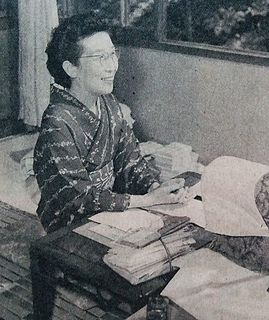 W
WTatsuko Hoshino was a Japanese haiku poet active in Shōwa period Japan.
 W
WNoriko Ibaragi was a Japanese poet, playwright, essayist, children's literature writer, and translator. She is most well known for her poem, Watashi ga ichiban kirei datta toki , written twelve years after the Japanese defeat in WWII. In 1953, she co-founded the literary journal Kai ("Oars"). She began to learn Korean as a second language at the age of fifty, going on to publish her own translations of poetry by her Korean contemporaries.
 W
WIke Gyokuran was a Japanese Bunjinga painter, calligrapher, and poet. She was famous in Kyoto, Japan, during her lifetime, and she remains a celebrated artist in Japan.
 W
WThe Attendant to Empress Inpu was a Japanese noblewoman and waka poet in the Heian period.
 W
WLady Ise , also known as Ise no miyasudokoro (伊勢の御息所), was a Japanese poet in the Imperial court's waka tradition. She was born to Fujiwara no Tsugukage of Ise Province, and eventually became the lover of the Prince Atsuyoshi and a concubine to Emperor Uda; her son by him was Prince Yuki-Akari.
 W
WIse no Taifu (伊勢大輔), also known as Ise no Tayū or Ise no Ōsuke, was a Japanese poet active in the early 11th century.
 W
WIzumi Shikibu was a mid-Heian period Japanese poet. She is a member of the Thirty-six Medieval Poetry Immortals . She was the contemporary of Murasaki Shikibu, and Akazome Emon at the court of empress Joto Mon'in.
 W
WEmpress Jitō was the 41st monarch of Japan, according to the traditional order of succession.
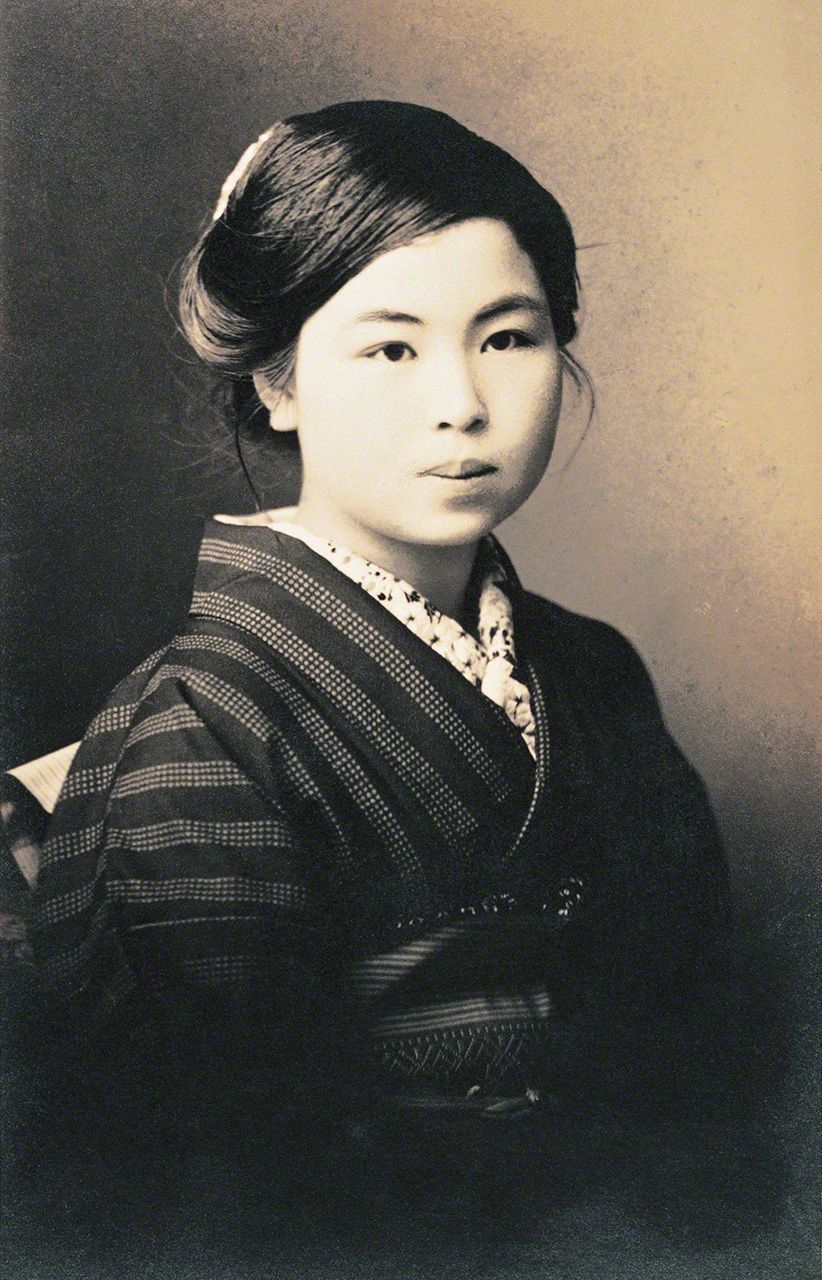 W
WMisuzu Kaneko was a Japanese poet and songwriter. She was born Teru Kaneko in Senzaki-mura, now part of Nagato, Yamaguchi prefecture.
 W
WKikuko Kawakami was a Japanese writer active during the Shōwa period of Japan. Her maiden name was Shinoda Kikuko.
 W
WPrincess Kishi was a Japanese Waka poet of the middle Heian period. She is one of only five women numbered as one of the Thirty-six Poetry Immortals. As her name implies, she was a princess of the Imperial Family of Japan. She was one of Emperor Murakami's consorts, and gave birth to one daughter, Imperial Princess Kishi, and a son. Through her father, Imperial Prince Shigeakira, she was the granddaughter of Emperor Daigo. Prior to becoming a consort she served as Ise Priestess, chief priestess of the Ise Shrine.
 W
WYao Kitabatake was a poet and children's literature writer in Shōwa period Japan.
 W
WKodai no Kimi was a Japanese waka poet and noble from the middle Heian period. She is one of only five women numbered as one of the Thirty-six Poetry Immortals.
 W
WKoshikibu no Naishi was a Japanese waka poet of the early eleventh century. One of her poems was included in the Ogura Hyakunin Isshu.
 W
WTakeko Kujō was a humanitarian and founder of the Buddhist Women's Association in order to promote the status and solidarity of Buddhist women in Japan, and later overseas.
 W
WSadako Kurihara was a Japanese poet who lived in Hiroshima and survived the atomic bombing during World War II. She is best known for her poem Umashimenkana.
 W
WMurasaki Shikibu was a Japanese novelist, poet and lady-in-waiting at the Imperial court during the Heian period. She is best known as the author of The Tale of Genji, widely considered to be the world's first novel, written in Japanese between about 1000 and 1012. Murasaki Shikibu is a descriptive name; her personal name is unknown, but she may have been Fujiwara no Kaoruko , who was mentioned in a 1007 court diary as an imperial lady-in-waiting.
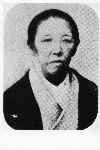 W
WNakajima Utako was a Japanese waka and tanka poet and conservatory founder. Associated with Keien court poetry, she founded the Haginoya poetry school, the most notable of the poetry conservatories during the Meiji period.
 W
WNakatsukasa was a Japanese Waka poet from the middle Heian period. Nakatsukasa was the granddaughter of Emperor Uda and the daughter of poet Lady Ise. She is one of five women numbered as one of the Thirty-six Poetry Immortals. (She married another of the famous thirty-six, Minamoto no Saneakira.
 W
WLady Sanuki, attendant to retired Emperor Nijō was a waka poet and Japanese noblewoman active in the late-Heian and early-Kamakura period. She was a contributor to the Senzai Wakashū anthology.
 W
WKanoko Okamoto was the pen-name of a Japanese author, tanka poet, and Buddhist scholar active during the Taishō and early Shōwa periods of Japan.
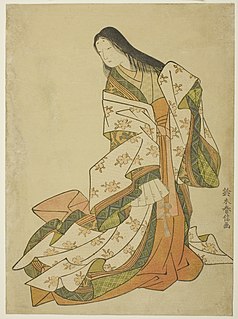 W
WOno no Komachi was a Japanese waka poet, one of the Rokkasen — the six best waka poets of the early Heian period. She was renowned for her unusual beauty, and Komachi is today a synonym for feminine beauty in Japan. She also counts among the Thirty-six Poetry Immortals.
 W
WOno Otsū, also known as Ono no Ozū, was a Japanese noble lady, calligrapher, poet, painter and musician. She was a student of the arts in Kyoto, studying painting, calligraphy, music, chanting, and waka poetry. Her work was noticed by members of the Tokugawa shogunate, including Tokugawa Ieyasu and Tokugawa Hidetada, and she was often hired by them to teach members of their court. Because she was the author of works that impacted Japanese art during the Azuchi-Momoyama and Edo period, and served several prominent figures, Otsū was proclaimed one of the leading female calligraphers of premodern Japan.
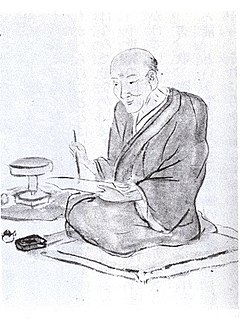 W
WŌtagaki Rengetsu was a Buddhist nun who is widely regarded to have been one of the greatest Japanese poets of the 19th century. She was also a skilled potter and painter and expert calligrapher.
 W
WRikei was a Japanese noble lady, calligrapher, poet and scholar. She was the eldest daughter of Katsunuma Nobutomo, a samurai of the Sengoku period. She lived as a nun on Daizen-ji temple at Mount Kashiwao and is most notable for her military history, Rikei-ni no Ki, or "Nun Rikei’s Account."
 W
WSagami , also known as Oto-jijū (乙侍従), was a Japanese waka poet of the mid-Heian period. One of her poems was included in the Ogura Hyakunin Isshu. She produced a private collection, the Sagami-shū.
 W
WSaionji Kishi , or more formally Fujiwara no Kishi , was an Empress consort of Japan. She was the consort of Emperor Go-Daigo of Japan. She was given the regnal name Reiseimon-in (礼成門院) in 1332 when her husband was banished, but it was abolished when he returned to the chrysanthemum throne in 1333. Later she was given the second regnal name Go-Kyōgoku-in (後京極院) upon her death. She was also an excellent poet, 14 of whose waka poetry are included in chokusen wakashū.
 W
WSei Shōnagon was a Japanese author, poet, and a court lady who served the Empress Teishi (Sadako) around the year 1000 during the middle Heian period. She is the author of The Pillow Book .
 W
WMitsuko Shiga was the pen-name of Mitsu Ōta, a Japanese tanka poet active in Taishō and Shōwa periods Japan.
 W
WPrincess Shikishi was a Japanese classical poet, who lived during the late Heian and early Kamakura periods. She was the third daughter of Emperor Go-Shirakawa. In 1159, Shikishi, who did not marry, went into service at the Kamo Shrine in Kyoto. She left the shrine after some time, and in her later years became a Buddhist nun.
 W
WSuō no Naishi was a Japanese waka poet of the late-Heian period. One of her poems was included in the Ogura Hyakunin Isshu, and thirty-five in imperial collections. She also produced a private waka collection, the Suō no Naishi-shū.
 W
WLady Horikawa, attendant to Empress Taiken was a waka poet and Japanese noblewoman active in the Heian period.
 W
WTakashina no Takako , also known as the mother of the Honorary Grand Minister or as Kō no Naishi (高内侍), was a Japanese waka poet of the mid-Heian period. One of her poems was included in the Ogura Hyakunin Isshu.
 W
WSakae Tsuboi was a Japanese novelist and poet.
 W
WUkon (右近) was a Japanese poet of the Heian period. She was also a lady-in-waiting of Lady Onshi, consort of Emperor Daigo.
 W
WRie Yasumi is a Japanese senryū poet, a graduate of Otemae University. Her real name is Rieko Yasumi .
 W
WYosano Akiko was the pen-name of a Japanese author, poet, pioneering feminist, pacifist, and social reformer, active in the late Meiji period as well as the Taishō and early Shōwa periods of Japan. Her name at birth was Shō Hō . She is one of the most noted, and most controversial, post-classical woman poets of Japan.